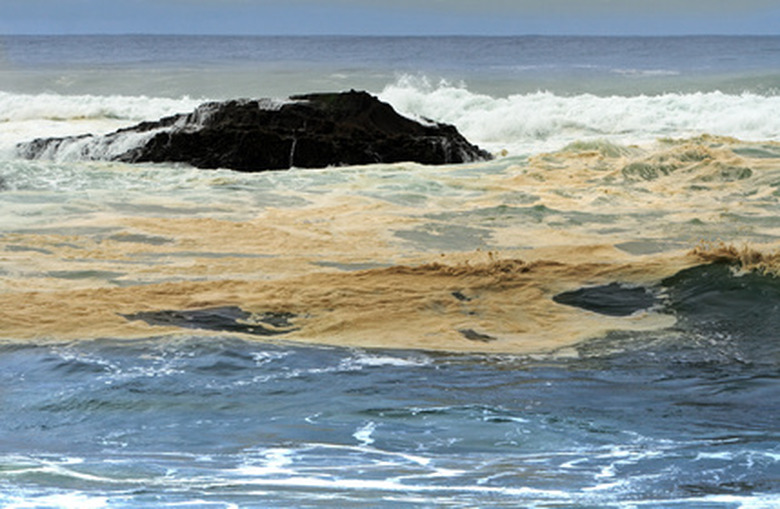Types Of Oil Spills
Oil spills occur when petroleum, plant- or animal-based oils enter the environment unintentionally. Oil spills daily on land and water; most of the oil eventually makes its way into the water through runoff. Causes range from consumers who spill oil when filling their cars with gas to high-profile oil industry accidents that spew millions of gallons. The type of oil spilled affects cleanup methods, and different types of oil spills have different effects on wildlife and human habitats. When an oil spill occurs, responders consider factors such as oil toxicity, rate of oil spreading, and length of time for oil to break down. Other important considerations include location of the spill and weather conditions.
Class A Oil
Class A Oil
Class A oil is light and fluid, spreads quickly when spilled and has a strong odor. Class A oil is the most toxic but least persistent of all oils. If the oil soaks into the soil, the effects will be long lasting. In water, class A oils disperse readily but affect aquatic life in the upper water column. Class A oils include high-quality light crude oils as well as refined products such as gasoline and jet fuel. Toxic components of gasoline include benzene, a known carcinogen, and hexane, which can damage nervous systems in humans and animals.
Class B Oil
Class B Oil
Class B oils are known as "non-sticky" oils. They are less toxic than class A oils but more likely to adhere to surfaces. According to the U.S. Fish and Wildlife Service, they can cause long-term contamination. Lower-quality light crude oils and refined products such as kerosene and other heating oils fall into class B. Class B oils leave a film on surfaces, but the film will dilute and disperse if flushed vigorously with water. Class B oils are highly flammable and will burn longer than class A oils.
Class C Oil
Class C Oil
Class C oils are heavy and sticky. While they do not spread as quickly or penetrate sand and soil as easily as lighter oils, class C oils adhere strongly to surfaces. Class C oil does not easily dilute and disperse, making it especially detrimental to wildlife, such as fur-bearing marine mammals and waterfowl. Because it produces such a sticky film, a class C oil spill can severely contaminate intertidal zones, leading to expensive, long-term cleanups. Class C oils include most types of crude oil and bunker B and bunker C fuel oils. Such oils are prone to forming lumps of oil or emulsions.
Class D Oil
Class D Oil
Class D crude oil is solid and has the least toxicity. The biggest environmental concern posed by class D oil occurs if the oil is heated and hardens on a surface, making cleanup nearly impossible. The U.S. Environmental Protection Agency points out that as the volatile components of some oils evaporate they may leave behind class D residues.
Non-Petroleum Oil
Non-Petroleum Oil
Synthetic oils and oils derived from plant or animal fats are regulated by the EPA because they cause contamination if released into the environment. Non-petroleum oils coat wildlife and can cause death due to suffocation or dehydration. Non-petroleum oils are slow to break down and easily penetrate soil, causing long-lasting damage to an affected area. Examples of non-petroleum oil products include cooking fats and synthetic oils.
References
- U.S. Fish and Wildlife Service: Effects of Oil Spills on Wildlife and Habitat PDF
- U.S. Environmental Protection Agency: Petroleum Oils
- U.S. Environmental Protection Agency: Types of Crude Oil
- U.S. Environmental Protection Agency: Types of Refined Petroleum Products
- U.S. Environmental Protection Agency: Non-Petroleum Oils
Cite This Article
MLA
King, Jennifer. "Types Of Oil Spills" sciencing.com, https://www.sciencing.com/types-oil-spills-6593214/. 24 April 2017.
APA
King, Jennifer. (2017, April 24). Types Of Oil Spills. sciencing.com. Retrieved from https://www.sciencing.com/types-oil-spills-6593214/
Chicago
King, Jennifer. Types Of Oil Spills last modified March 24, 2022. https://www.sciencing.com/types-oil-spills-6593214/
